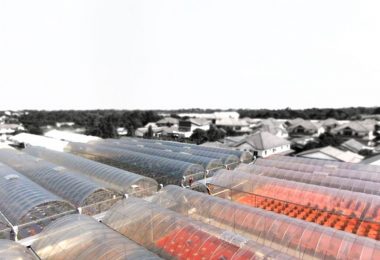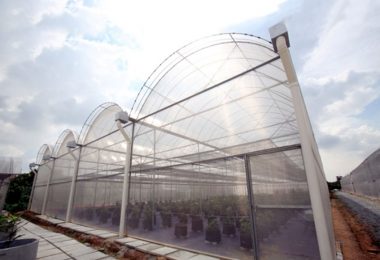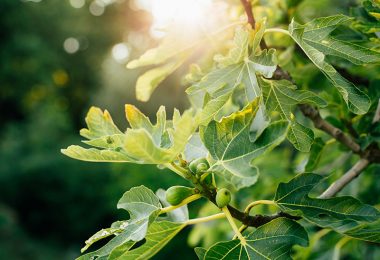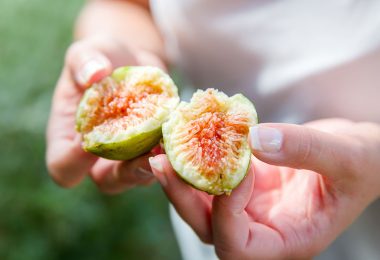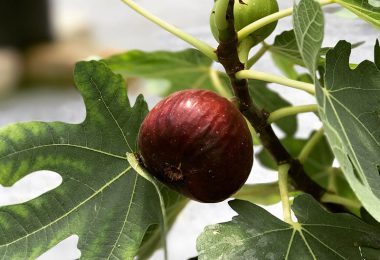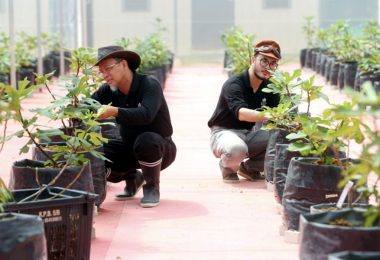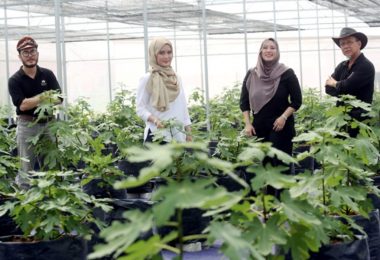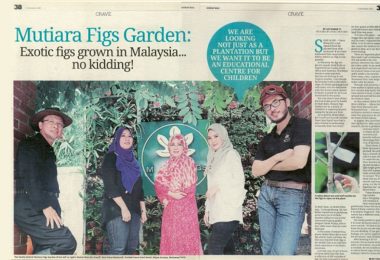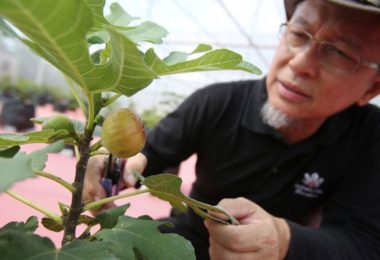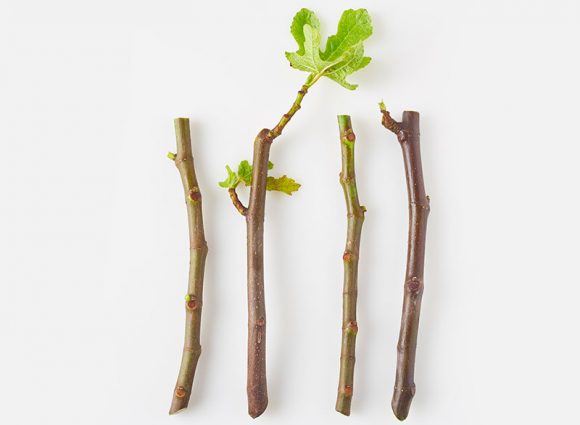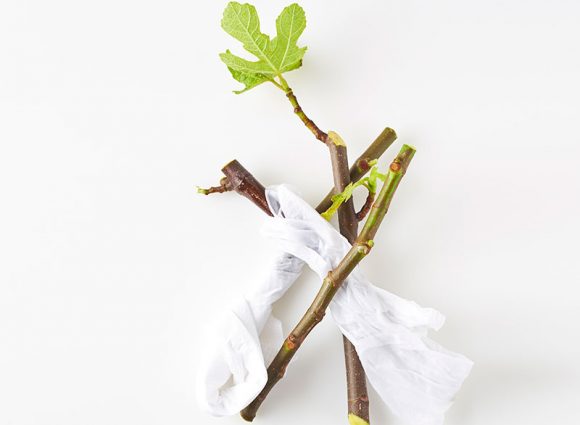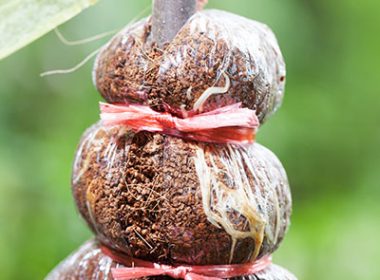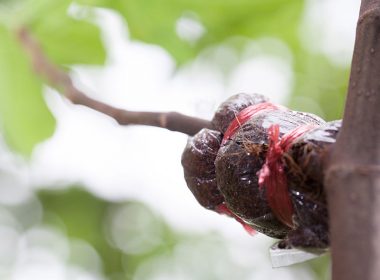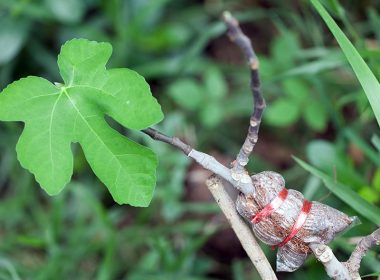Mutiara Fig Farm
Our Farm
REAL PEOPLE, REAL LOCAL, REAL TASTE OF FIG!
(Family grown pesticide-free from your local farm)
Hi, we are Mutiara Figs Family! Together, we own and operate Mutiara Figs Farm, and we are an active part of the pesticide-free farm.
Mutiara Figs farm initially started by Ar Mohd Hilmi (owner) who collected up to 300 varieties of fig plant and was filling up the house with the plant.
At first, he started to plant fig for his own consumption for their abundance of health benefit and ended up having extra produce. Not wanting to let anything go to waste, all extra produced was sell to families and friends who lived nearby Shah Alam.
People started to know about fig and visit the house, drinking fig tea while visiting the small fig garden behind the house. They really enjoy the new experience of fig garden and started to ask to supply to supermarket, that’s how MUTIARA FIGS FARM was born!
The next step for Mutiara Figs was to decide where to establish the farm. Mutiara figs decided to be in the city center in order to easily supply fresh fig to supermarket and also to reduce carbon foot print. Mutiara figs is located in between KL and also KLIA which is convenient for everybody to visit as an Agro tourism.
Mutiara figs farm is grown in a control environment where all plant are planted in greenhouse with pesticide-free and maintain strict and sustainable farming practices.
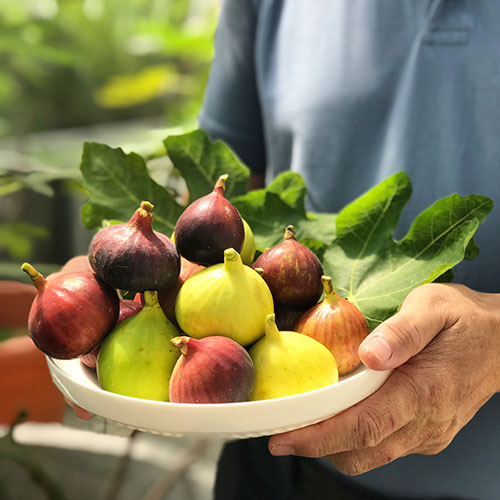
to bring fresh, nutritious, and safe food at good value to our customers and their families.
Our Values

Fruits All Year Round
With our advanced technology and climate, fig in Malaysia can fruit all year round!

Pesticide-Free
We only use organic pesticide inside our greenhouse.

Fig for Health
Fig nutrition actually has an insane amount of health benefits.

Quality Fruit Supply
We produce only quality, sweet, premium fig fruits from our farm.

Sustainable Farming
Our Innovation Values

Automated Irrigation & Fertigation System

Control Air Circulation & Humidity

Rain Water Harvesting System

Environmental Control Greenhouse
We will be working together with MIMOS for the control environment inside the greenhouse.

To produce green healthy big size leaf and productive fig plant.

To produce big size and quality fruits and able to control the sweetness and crunchiness of the fruit.
Our Services
We sell fresh figs
We provide fig cutting, air grafting and fig plant
We sell fertilizer, fig leaf and fig fruit for MFM
Varieties of Figs
Mutiara Fig Farm has collected almost 500 varieties from red, yellow, green and black figs. These are some of the fig varieties that you can find from our fig farm.
Red Figs
- Super Jumbo
- Jumbo
- Super Red Hybrid
- Brazilian XP
- MD(A)
- TGF
- BTMG
- Red Khutmani
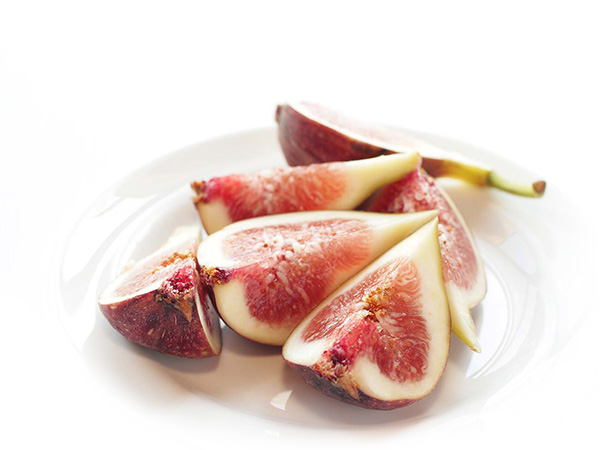
Yellow Figs
- Deanna
- Orphan
- B110
- Jacque Cartiet
- Da Ponte
- Dalmatie Croatia
- Xin Jiang
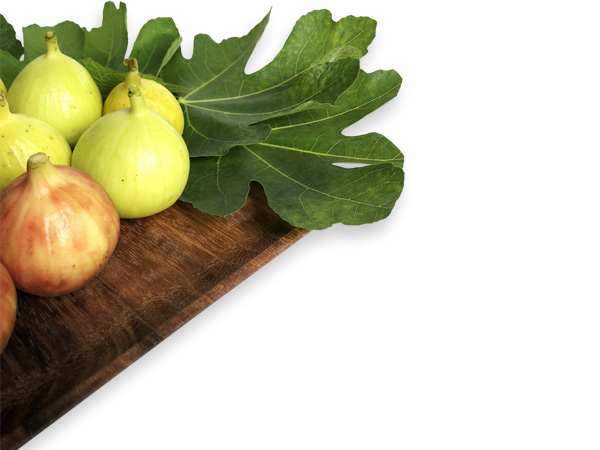
Green Figs
- Latarolla
- Ponte Tresa
- Sceleno Pamona
- Moulinat
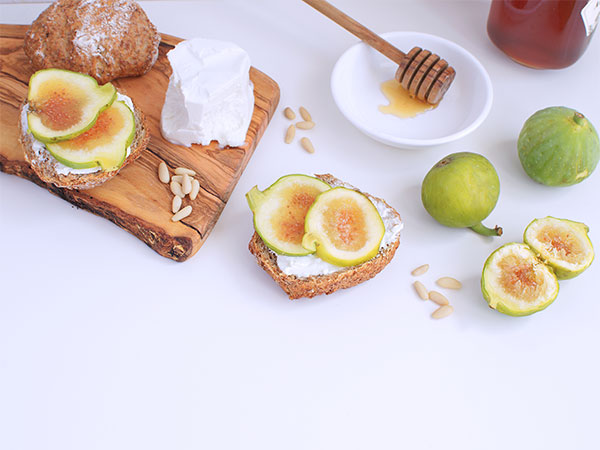
Black Figs
- Joulle Noire
- Back de Perdu
- Turca
- Noire de Barbentene
- Black Madera
- Maltese Falcon
- Andreva
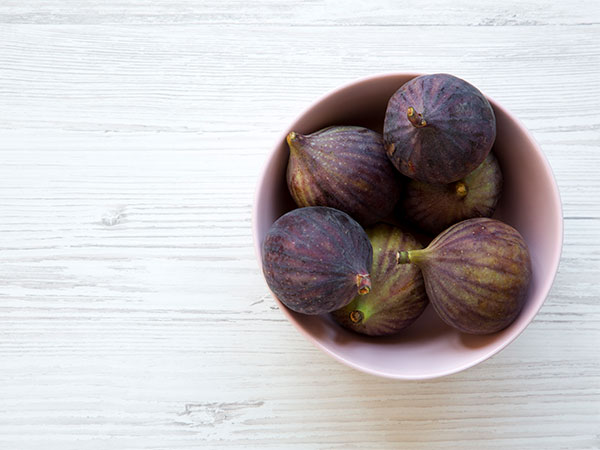
Rare Variety Figs
- Martinenca Rimada
- Bardisot Rimada
- Ponte Teresa
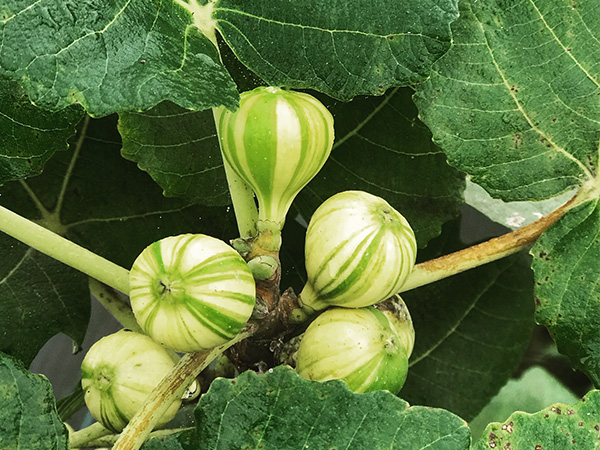
Tips on Planting Fig
From Cuttings
Rooting Fig Cuttings Outdoors. A more popular method of rooting figs outdoors is through fig cuttings. Fig Cuttings should be about ½ to ¾ inches thick, about the width of your pinky, and 8-12 inches long. The bottom end cut should be flat and the tip cut on a slant. Treat the slanted end with a sealant to prevent disease and the flat end with rooting hormone. When learning how to start a fig tree by this method, it’s best to use six to eight shoots to allow room for some failures.
You can always give away multiple successes! Plant the rooting fig’s flat end 6 inches deep in hole 6 inches wide and about a foot apart. Water well, but don’t over water. Keep them under the shades (terrace, porch or balcony). In 2 weeks time, you can see there will be roots growing and another week the shoots start to come out. The new trees will be ready to transplant after 3-4 months time.
From Air Layering
With their vigorous growth and ease of rooting, fig trees (Ficus carica) make an ideal candidate for air layering propagation. The process requires more attention to detail than other common propagation options, such as cuttings and seeds, but it also requires less maintenance during the rooting process and will produce a rooted specimen in just a few months. However, the correct timing, equipment and technique are required to ensure a successful outcome.
Equipment Preparation
Air layering requires careful concentration, so gathering and preparing the necessary equipment beforehand will help minimize distractions.
You’ll need a very sharp knife or utility blade, a large handful of sphagnum moss, an 8-by-8-inch sheet of polyethylene film, rooting hormone talc and a roll of electrician’s tape.
Rub the knife blade with rubbing alcohol to sanitize it and place the sphagnum moss in a bowl of water to soak for at least 20 minutes, or until it plumps up.
Basic Procedure
During the layering process, fig trees will produce new roots from the growth nodes located at the base of the leaf buds. Measure back 12 inches from the tip of a 1/4-inch-thick stem and locate the nearest set of leaf buds. Using the knife, scrape off all of the leaf buds 3 inches above and below it. Remove a 1-inch-wide piece of bark from around the fig stem, then scrape off the bright green cambium layer inside to prevent callousing. Dust the debarked portion with rooting hormone, then wrap it with the moistened sphagnum moss. Cover the moss bundle with the polyethylene plastic, then seal the seam at the top and bottom with electrician’s tape.
Rooting Process
Most fig trees will produce roots in one to two months when air layered. However, the exact rooting time may vary greatly with the temperature and weather. No special care is required with the fig stem roots, although the tree should be kept watered to keep it healthy and hydrated. Masses of shiny, white roots will be visible through the polyethylene plastic once the fig stem is ready for transplant. Sever the stem just below the rooted portion, then remove the plastic and sphagnum moss bundle to reveal the roots. Carefully transplant it into a 1-gallon nursery pot filled with fast-draining potting soil and place it in a sheltered, lightly shaded location.
Transplant and Aftercare
Newly transplanted fig trees should be surrounded by a 3-inch layer of mulch and watered to a depth of 3 to 5 inches weekly during their first summer in the garden. Keep them under the shades (terrace, porch or balcony).
From Small Plant
To plant container-grown trees in the ground:
- Remove the plant from its pot and remove any circling roots by laying the root ball on its side and using shears to cut through the roots.
- Dig a hole that is a few inches deeper and wider than the spread of the roots. Set the tree on top of a small mound of soil in the middle of the hole. Be sure to spread the roots away from the trunk without excessively bending them.
- Plant the tree 2 to 4 inches deeper than it was originally in the pot (check the color of the trunk to see the original soil line).
Caring For Fig Trees
- Water young fig trees regularly to help them become established but don’t overwatering.
- Unless grown in containers, most fig trees do not require regular fertilization. However, if your fig tree is not growing much (less than 12 inches in one growing season), you can add ½ to 1 pound of nitrogen supplement. Divide up the nitrogen into 3 to 4 feedings. Start applying the nitrogen early in the morning or in the evening.
- You can also apply a layer of mulch around the tree to help prevent weeds and keep in moisture for the roots.
- Fig trees require little pruning. Be sure to remove all dead, diseased, or weak branches to encourage growth.
- If you have an abundant growth of figs, you can thin the fruit to encourage larger figs.
Pest/Disease
- Root-knot Nematodes
- Leaf spots
- Rust
- Fungus
- Virus
- Squirrel
- Birds

Harvesting Figs
- You should harvest figs only when they are fully ripe, as they will not continue to ripen off the tree. The figs should be fully colored and slightly soft to the touch.
- You may need to invest in bird netting to protect your crop; figs are a favorite of birds and squirrels.
- When picking figs, wear gloves or long sleeves because the sap from the fig tree can irritate your skin.
- Figs are very perishable. Store figs in the refrigerator; they will keep for 2 to 3 days.
- For long-term storage, you can freeze figs whole for later use. Another storage method is to dry the figs. You can also do your own jam from ripe fresh figs.
Recommended Varieties
- MD(A) – require less care compared to other varieties. It produces medium figs that are sweet and rich in flavor.
- TGF – hardy variety that produces red figs
- BTM6 – vigorously produces small to medium fruit. Its figs are rich and sweet.
- DEANNA – produce big subtle sweet yellow fig
Accreditation
In future, we are targeting to get accreditation from :
- MALAYSIA BEST
- MY GAP
- HALAL FOR FRESH FRUIT

